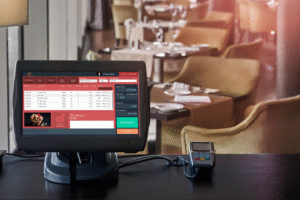The Rise of On-Demand Label Printing: How Businesses Can Benefit
Businesses need to adapt quickly to changing consumer demands, regulatory requirements, and product variations. Traditional label printing methods often result...

Businesses need to adapt quickly to changing consumer demands, regulatory requirements, and product variations. Traditional label printing methods often result in excess inventory, wasted materials, and high costs. However, on-demand label printing is transforming the industry, allowing companies to print exactly what they need, when they need it.
This shift toward on-demand printing is fueled by technological advancements in high-quality color label printers, improved printing software, and increased demand for customization. Whether you run a small business or a large-scale manufacturing operation, understanding the benefits of this approach can help streamline operations and improve cost efficiency.
What Is On-Demand Label Printing?
On-demand label printing refers to the process of printing labels as needed, rather than relying on pre-printed stock. Businesses use color label printers that allow them to print labels in-house, eliminating the need for bulk orders from third-party suppliers.
This method provides greater flexibility, reduces waste, and enables quick label modifications. With the best label design software for printers, businesses can easily create custom labels that align with changing branding strategies or compliance requirements.
Key Benefits of On-Demand Label Printing
1. Cost Savings and Reduced Waste
Traditional label printing requires businesses to order labels in large quantities to meet supplier minimums, leading to excess inventory and potential waste. With thermal label printers, businesses can print only what they need, reducing material waste and saving money on bulk orders.
2. Faster Turnaround Times
With in-house thermal transfer labels, businesses can print labels immediately, avoiding the delays associated with ordering from third-party suppliers. This is especially beneficial for industries with frequent product updates or seasonal variations.
3. Customization and Branding
Businesses can leverage premium topcoated direct thermal labels to create high-quality, black and white labels and more popular for shipping labels or barcode labels that are required for short periods. Whether it’s a new product launch, a limited-time promotion, or a personalized touch for customers, on-demand printing allows for seamless customization.
4. Regulatory Compliance
Industries such as pharmaceuticals, food, and cosmetics have strict labeling regulations. On-demand printing ensures businesses can quickly adapt to changes in compliance requirements without discarding outdated labels.
5. Improved Inventory Management
Companies that frequently update product details, pricing, or barcodes benefit from the ability to print direct thermal labels on demand. This eliminates the risk of storing outdated labels and ensures accurate inventory tracking.
Best Label Printers for On-Demand Printing
When choosing a label printer for small businesses, factors such as print quality, speed, and connectivity play a crucial role. The Afinia L502, Primera LX910, and LX4000 are among the best options for businesses looking for reliable high-quality color label printers. These models support a wide range of label materials, including blank inkjet labels.
On-demand label printing offers a competitive advantage for businesses of all sizes. By investing in color label printers, companies can enjoy flexibility, cost savings, and improved efficiency.

For businesses looking to upgrade their labeling process, explore blank inkjet labels online and thermal transfer printers for sale at DuraFast Label. Take control of your labeling needs today!
Author Bio
This article was written by an independent industry expert passionate about printing technology and business efficiency. With years of experience in labeling solutions, the author provides valuable insights into optimizing business operations through advanced printing methods.







